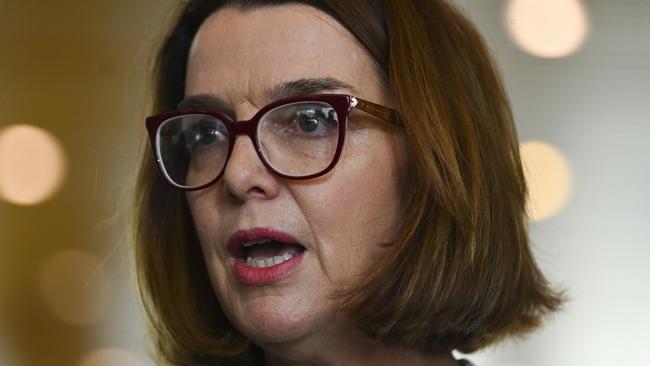Funding boost for sex abuse victims
The National Redress Scheme will have its funding lifted to more than $45 million.

The National Redress Scheme will have its funding lifted to more than $45m in a bid to increase access to the program and fast-track processing for survivors, who are increasingly naming multiple institutions in their applications.
The scheme, which began on July 1 last year, has received more than 5040 applications and finalised or made offers of payment in 746 cases, with average redress payment amounts of $80,019.
Prior to the establishment of the scheme, it was forecast about 25 per cent of applications would name more than one institution in their applications but that estimate has surged to about three-quarters of applications to date.
As of October, 1004 named a single institution, 1476 named two institutions, 1066 named three institutions and 996 named four or more institutions.
The extra $11.7m in funding, aimed at fast-tracking processing applications, is in addition to the Coalition’s $33.4m for the establishment of the scheme and $54m for redress support services from 2018-19 to 2020-21.
The Morrison government is pushing more institutions — including sporting organisations — to join the National Redress Scheme to help promote awareness and support 618 applications placed on hold because some organisations have not yet joined the scheme.
The average processing time for applications is eight months, with survivors of institutional child sexual abuse given six months to consider an offer.
To date, no one has rejected an offer of redress.
Families and Social Services Minister Anne Ruston said the government acknowledged the scheme, which provides payments, counselling and support for child sex abuse victims, was not perfect but was “working hard to improve the system’’.
“It has been a significant task to get institutions to sign up and we continue to support, encourage and apply pressure to all institutions with a history of working with children,” Senator Ruston said.
“After the first year of operation, the complex and concerning nature of the applications of which two-thirds name more than one institution as being responsible for abuse suffered is clear.
“These are devastating figures which identify the suffering experienced by survivors.”
Senator Ruston said the funding boost would be used to support management of redress cases.
“It will be used to support two significant changes that will allow us to case-manage applications and hire more independent decision-makers who are former social workers, counsellors and police with backgrounds in this area to assess finalised applications as quickly as possible.”
Marking the first anniversary of the national apology to victims and survivors of institutional child sexual abuse on Tuesday, Senator Ruston praised the “bravery and strength” of those who had come forward to share their stories.
She said the process had helped the “country come to terms with the level of abuse perpetrated in institutions entrusted to care for young Australians”.
“The government recognises that survivors of institutional child sexual abuse have been waiting a very long time for redress and that they face enduring pain as they wait for a resolution,” she said.
As of last month, all state and territory governments and 61 non-government organisations covering more than 41,200 sites were participating in the scheme.




To join the conversation, please log in. Don't have an account? Register
Join the conversation, you are commenting as Logout